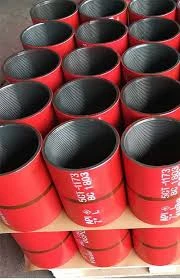- Afrikaans
- Albanian
- Amharic
- Arabic
- Armenian
- Azerbaijani
- Basque
- Belarusian
- Bengali
- Bosnian
- Bulgarian
- Catalan
- Cebuano
- Corsican
- Croatian
- Czech
- Danish
- Dutch
- English
- Esperanto
- Estonian
- Finnish
- French
- Frisian
- Galician
- Georgian
- German
- Greek
- Gujarati
- Haitian Creole
- hausa
- hawaiian
- Hebrew
- Hindi
- Miao
- Hungarian
- Icelandic
- igbo
- Indonesian
- irish
- Italian
- Japanese
- Javanese
- Kannada
- kazakh
- Khmer
- Rwandese
- Korean
- Kurdish
- Kyrgyz
- Lao
- Latin
- Latvian
- Lithuanian
- Luxembourgish
- Macedonian
- Malgashi
- Malay
- Malayalam
- Maltese
- Maori
- Marathi
- Mongolian
- Myanmar
- Nepali
- Norwegian
- Norwegian
- Occitan
- Pashto
- Persian
- Polish
- Portuguese
- Punjabi
- Romanian
- Russian
- Samoan
- Scottish Gaelic
- Serbian
- Sesotho
- Shona
- Sindhi
- Sinhala
- Slovak
- Slovenian
- Somali
- Spanish
- Sundanese
- Swahili
- Swedish
- Tagalog
- Tajik
- Tamil
- Tatar
- Telugu
- Thai
- Turkish
- Turkmen
- Ukrainian
- Urdu
- Uighur
- Uzbek
- Vietnamese
- Welsh
- Bantu
- Yiddish
- Yoruba
- Zulu
seating nipple in tubing
Understanding the Role of Seating Nipple in Tubing A Comprehensive Overview
In the field of oil and gas production, the efficient and effective transfer of fluids is paramount. One critical component that facilitates this process is the seating nipple within a tubing system. This article delves into the design, function, and significance of seating nipples, shedding light on their role in enhancing operational efficiency and ensuring the integrity of fluid transport systems.
What is a Seating Nipple?
A seating nipple is a specialized fitting used in tubing systems to provide a secure connection point for a variety of tools and devices, such as packers, plugs, and valves. Typically made from durable materials like carbon steel or stainless steel, these nipples are designed to withstand extreme temperatures, pressures, and corrosive environments commonly found in oil and gas wells.
Design and Functionality
The design of a seating nipple involves a cylindrical body, which is threaded at both ends to allow for easy connection with other tubular components. It usually has a series of internal features, such as ledges or grooves, which lock in place the tools designed to be seated within it. This prevents slippage and ensures a tight seal, crucial for maintaining pressure and preventing leaks.
When deploying tools in a well, operators lower the tool down the tubing until it reaches the seating nipple. Once positioned, the tool is pushed against the nipple's internal features, at which point it ‘seats’ securely. The design facilitates the easy retrieval of tools as well, enabling operators to pull them back out of the well with minimal hassle.
Importance in Oil and Gas Operations
The seating nipple plays a vital role in various operations within oil and gas production. Here are some key functions and benefits
1. Enhanced Safety A properly seated tool helps to avoid the complications of blowouts and leaks. By providing a secure attachment, seating nipples contribute significantly to the overall safety of operations in the well.
2. Operational Efficiency Seating nipples help streamline workovers and interventions. Since tools can be easily deployed and retrieved, they reduce the time and labor necessary for maintenance, ultimately lowering operational costs.
seating nipple in tubing

3. Flexibility Seating nipples are compatible with multiple tools, offering adaptability in a range of scenarios. Whether using a packer to isolate sections of the well or deploying a plug for fluid control, a seating nipple can accommodate various equipment needs.
4. Integrity of Sealing The design ensures that the seal remains intact under the extreme conditions of a well, preventing the entry of unwanted fluids and the loss of pressure, both of which could drastically affect production rates.
5. Reduced Equipment Damage By securing tools in place, seating nipples help diminish the risk of equipment being damaged due to movement or vibration during operations. This not only protects the tools but also prolongs their lifespan, leading to cost savings.
Challenges and Considerations
Despite their advantages, the use of seating nipples does come with challenges that operators need to be aware of
1. Installation Requirements Correct installation is vital. If not properly secured, tools may become dislodged, which can lead to operational failures and costly delays.
2. Corrosion and Material Fatigue Given the harsh environments within wells, seating nipples are subject to wear and degradation over time. Regular inspections and maintenance are necessary to ensure their reliability.
3. Compatibility Issues Not all tools are universally compatible with every type of seating nipple. Operators must ensure the right match between the nipple and the tool to maximize efficiency.
Conclusion
The seating nipple is a fundamental component in the complex machinery of oil and gas production, serving as a critical junction for various operational tools. Its importance cannot be understated, as it not only enhances safety and efficiency but also contributes to the economic viability of extraction operations. As technology continues to evolve, advancements in the design and materials used for seating nipples will likely improve their performance, further optimizing the oil and gas industry's ability to meet global energy demands. Knowing how to work with and utilize these fittings effectively is essential for any operator aiming for success in this competitive field.
-
Well Casing Extension Couplings – Applications and InstallationNewsJun.06,2025
-
Types of Crossover Subs in Drilling & CompletionNewsJun.06,2025
-
Key Features of High-Quality Tubing Pup JointsNewsJun.06,2025
-
Installation and Maintenance Tips for Steel Couplings for PipeNewsJun.06,2025
-
How to Select the Right Pup Joint for Oil & Gas OperationsNewsJun.06,2025
-
Applications of Stainless Steel Pipe CouplingsNewsJun.06,2025







